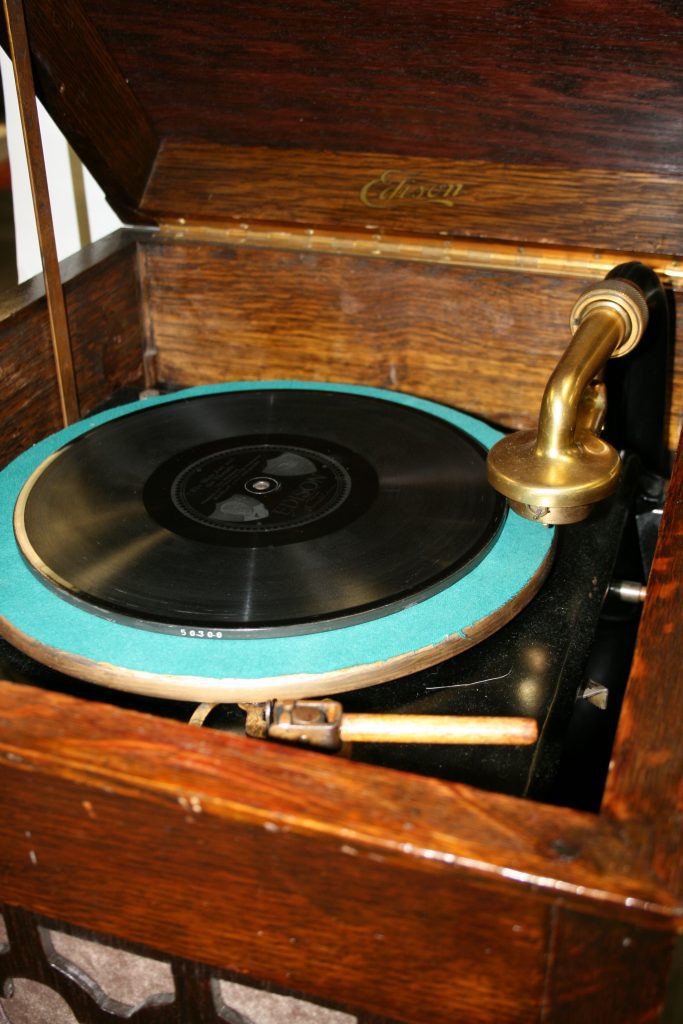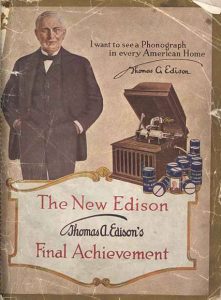“To invent, you need a good imagination and a pile of junk.”
Thomas A. Edison
Reflecting on 90 years of station history, CKUA has offered exceptional programming for decades while keeping pace with advancements in broadcasting, sound recording, and playback technology. Fortunately, thanks to careful acquiring and archiving, CKUA’s collection runs the gamut of recorded sound formats-everything from 45s, 78s, and LPs, to reel-to-reel tapes, CDs, and digital files. Within the estimated 1.5 million pieces in CKUA’s vault, there are approximately 225 Edison Blue Amberol Records, otherwise known as cylinders, and one Edison Amberola 30 phonograph.
Using a crank and spring mechanism to drive the motor, the Amberola 30 is a small table-top phonograph produced by Thomas A. Edison Inc (Edison) between 1915 and 1929. The Amberola 30 sold for $30-while the larger Amberola 50 sold for $50 and Amberola 75 sold for $75. Playing four minutes of music on blue celluloid cylinders, the Amberola 30 included a small internal horn to amplify the sound. The Amberola 30 was one of dozens of phonograph models produced by Edison between the late 1890s and 1920s. CKUA’s Amberola 30 player was donated to the station in 2013.
In addition to producing phonographs with cylindrical records, Edison also manufactured a number of phonograph models that played flat circular records, called Diamond Discs. With a thickness of 6.35mm (1/4 inch), these sturdy records played at 80 rpm and were marketed by Edison as re-creations rather than recordings of the original musical performance. CKUA’s Diamond Disc player was acquired in 2013 from phonograph restoration specialist Allan Gaudreault of Lac La Biche, Alberta.
Ironically, the popularity and appeal of phonographs began to waver in the mid-1920s with the advent of radio. In 1928, Edison entered into the radio business and began producing radio-phonographs. He shuttered his disc business in October 1929, just days before the great stock market crash on October 24, 1929.
Thomas Edison’s development of the phonograph helped bring music and recorded sound to the masses and is therefore a cornerstone of late 19th century and early 20th century music history. As part of its larger collection, CKUA’s Amberola 30 and Diamond Disc player are key pieces that help to highlight changes in recorded sound technology.
“Anything that won’t sell, I don’t want to invent. Its sale is proof of utility, and utility is success.”
Thomas A. Edison






